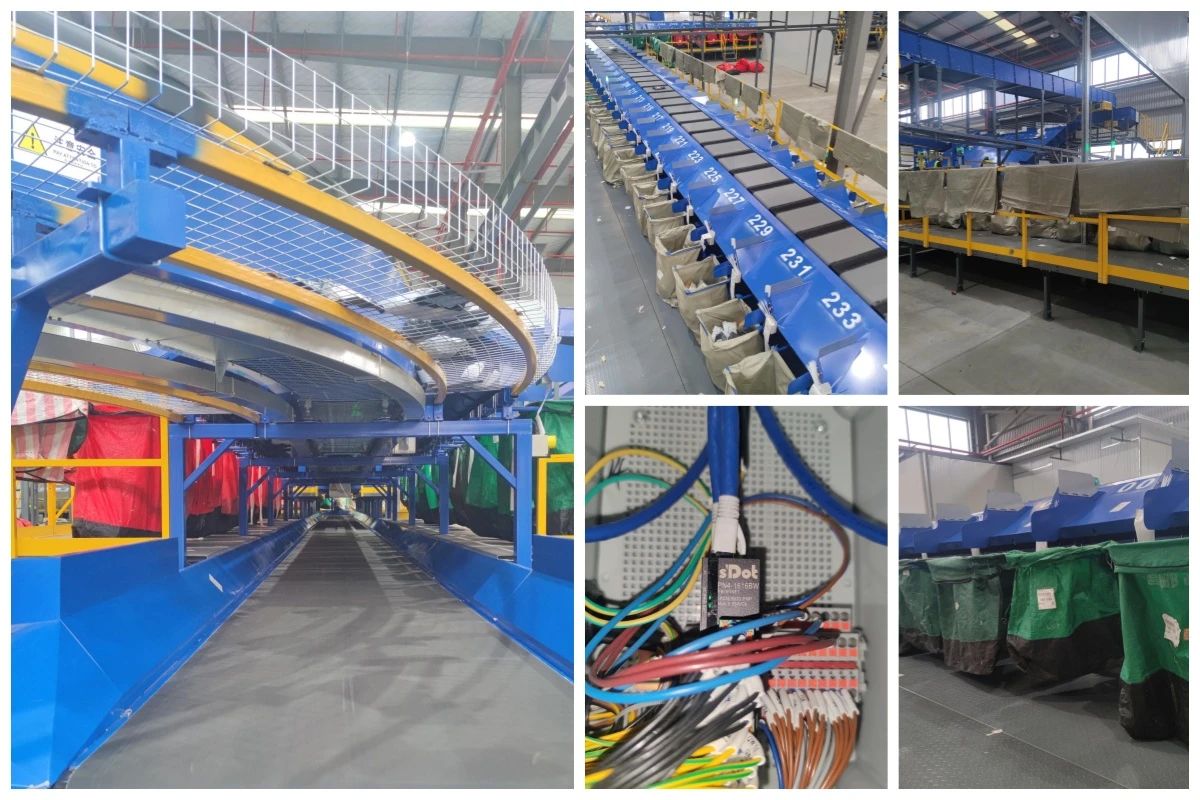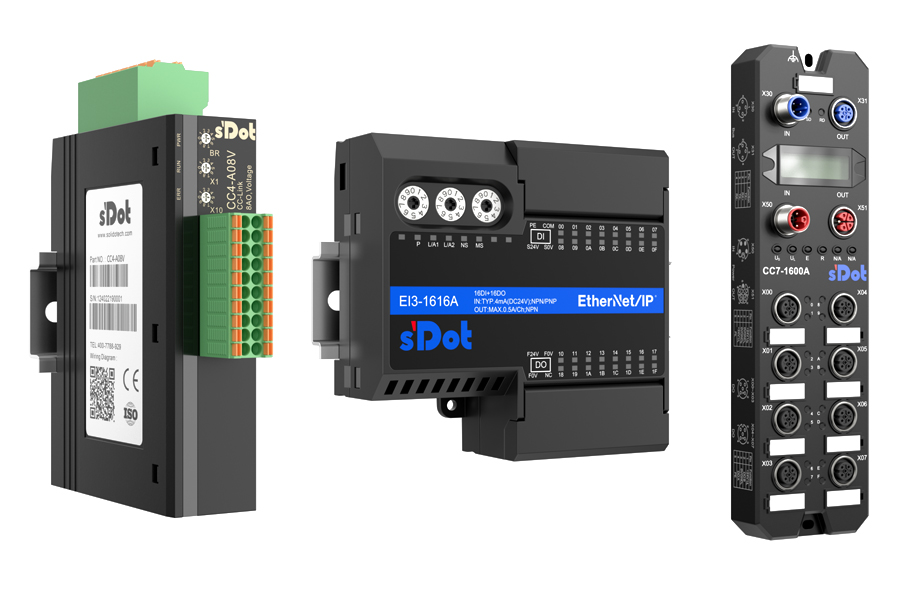The application of Solidot's integrated I/O module in the logistics circular cross-belt sorting system
The circular cross-belt sorting system is an efficient and precise logistics automation device. By working in collaboration with circular conveyors and sorting carts, it can quickly complete the processes of scanning, sorting, and bagging parcels. This system is characterized by high throughput, high sorting accuracy, and strong flexibility, making it widely applicable in fields such as e-commerce warehousing and express transfer centers, significantly enhancing logistics efficiency and reducing labor costs.
1. Production Process Introduction
Workflow of the circular cross-belt sorting system: Scanning input – Automatic sorting – Bagging
[Scanning Input]
Parcels enter the sorting system via a conveyor line, where the scanning device automatically identifies parcel information (such as destination, dimensions, and weight). Based on this information, the parcels are classified, and the data is uploaded to the control system to prepare for subsequent automatic sorting.
[Automatic Sorting]
Parcels are placed on the conveyor belt of the circular cross-belt sorting system. The system sorts parcels according to preset sorting rules by controlling the belt's rotation direction and speed, accurately delivering parcels to the respective sorting outlets.
[Bagging]
Sorted parcels enter the bagging area through a chute, where they are bagged and sealed either manually or by a robotic arm, before finally entering the outbound process.
2. I/O Module Application Method
This system uses the PROFINET protocol for communication. The overall I/O point distribution is sparse, and the total number is relatively low (usually fewer than 20 points). Solidot's integrated I/O module PN4-1616BW can provide 16 digital inputs and 16 digital outputs with just one module, meeting the system's needs for input and output points without the need for multiple module stackings, thus reducing space usage.
16 Digital Inputs: Some channels collect signals from photoelectric sensors to detect parcel positions in real time (e.g., trigger at the scanning area, position at the sorting outlet); some channels receive safety signals (such as emergency stop buttons and safety door statuses); and others obtain sorting commands (e.g., target chutes and parcel priority).
16 Digital Outputs: Based on commands from the control system, signals are sent to various actuators; certain outputs control the start and stop of auxiliary conveyor motors and change the direction of sorting cart belts, while others activate or deactivate auxiliary sound and light alarms and fault indicators.

3. Solidot Integrated I/O Module Series Products

Solidot’s integrated I/O modules support multiple bus protocols, are compact in size, fast in speed, and easy to wire. Equipped with a high-speed ARM and dedicated ASIC, these modules are simple to configure and can be cascaded. They are available in vertical, horizontal, and IP67 forms, making them suitable for various complex production environments.